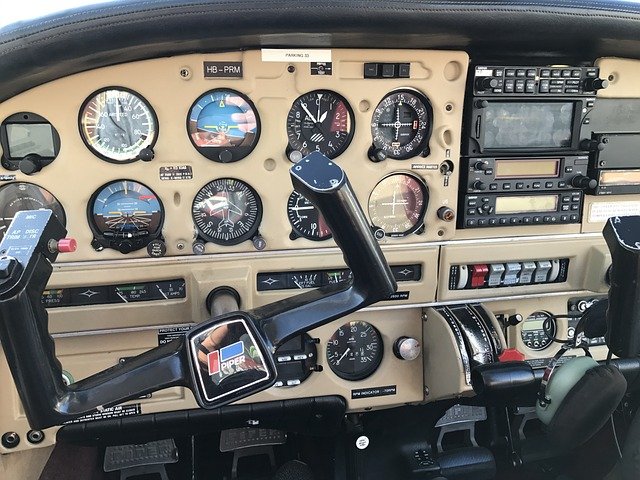What You Need to Know About Pilot Training for Seniors
Learning to fly as a senior adult presents unique opportunities and challenges in today's aviation landscape. While age brings wisdom and life experience to the cockpit, older aspiring pilots must navigate specific requirements, health considerations, and training approaches designed for their needs. Understanding the structure of pilot training programs, regulatory requirements, and practical considerations helps seniors make informed decisions about pursuing their aviation dreams.

Many seniors discover aviation later in life, whether fulfilling a lifelong dream or seeking a new challenge during retirement. The aviation industry welcomes older students, recognizing that maturity often brings dedication, patience, and strong decision-making skills that benefit pilot training. However, senior pilots face distinct considerations that younger students may not encounter.
How Pilot Training Programs Are Structured for Seniors
Pilot training programs accommodate seniors through flexible scheduling and personalized instruction approaches. Most flight schools offer part-time training schedules that work around retirement activities or reduced work commitments. Ground school instruction typically covers aerodynamics, weather, navigation, and Federal Aviation Regulations through classroom sessions, online courses, or self-paced study materials.
Flight training follows a structured progression from basic aircraft familiarization to solo flights and eventually checkride preparation. Senior students often benefit from additional practice time and may require more flights to reach proficiency standards, which instructors accommodate through customized training plans. Many schools assign experienced instructors who specialize in teaching older adults and understand the unique learning patterns of mature students.
Key Health Certifications and Requirements for Older Adults
Seniors must obtain medical certification from an Aviation Medical Examiner before beginning flight training. The FAA requires different medical certificate classes depending on the intended pilot privileges. Private pilots need at least a third-class medical certificate, which requires renewal every 24 months for pilots under 40 and every 12 months for those over 40.
Common health considerations for senior pilots include vision requirements, hearing standards, cardiovascular health, and neurological function. The FAA may issue medical certificates with restrictions or require additional testing for certain conditions. Seniors taking medications must ensure their prescriptions don’t disqualify them from flying, as some medications are prohibited or require special authorization.
Training Hours and Time Requirements
Private pilot certification requires a minimum of 40 flight hours under Part 61 regulations or 35 hours under Part 141 school programs. However, the national average for private pilot completion is 60-80 flight hours. Senior students may need additional time due to longer intervals between lessons or the need for extra practice in certain areas.
Ground instruction requirements include aeronautical knowledge areas covered through formal classes or self-study. Seniors often excel in ground school due to their study habits and life experience, though some may need additional time with technology-based training systems. The written exam must be passed before the practical checkride, and scores remain valid for 24 months.
Training Costs and Duration in the USA
Pilot training costs vary significantly based on location, aircraft type, and individual progress. Here’s a breakdown of typical expenses:
| Training Component | Cost Range | Duration |
|---|---|---|
| Ground School | $500-$1,500 | 2-6 months |
| Flight Training (Private) | $8,000-$15,000 | 6-18 months |
| Medical Certificate | $150-$300 | Initial exam |
| Written Exam Fee | $175 | One-time |
| Checkride Fee | $600-$800 | Final test |
Prices, rates, or cost estimates mentioned in this article are based on the latest available information but may change over time. Independent research is advised before making financial decisions.
Licensing Options and Career Paths
Seniors typically pursue private pilot licenses for recreational flying, though some advance to instrument ratings or commercial certificates. The private pilot license allows flying single-engine aircraft during daylight hours in good weather conditions. An instrument rating enables flight in clouds and poor visibility, while commercial licenses permit flying for compensation.
Recreational and sport pilot certificates offer alternatives with fewer requirements but more restrictions. Light sport aircraft categories provide options for seniors who may not qualify for traditional medical certificates, as sport pilots can use driver’s licenses for medical qualification under certain conditions.
Special Considerations for Senior Pilots
Age-related factors affect training approaches and aircraft selection. Seniors may prefer high-wing aircraft for easier ground visibility and simpler entry/exit procedures. Modern avionics with GPS navigation and autopilot systems can reduce workload and enhance safety for older pilots.
Insurance considerations become important as seniors may face higher premiums or coverage restrictions based on age and experience levels. Some insurers require additional training or proficiency checks for older pilots. Flight schools often provide guidance on insurance options and requirements specific to senior pilots.
Weather decision-making becomes crucial as seniors may have less tolerance for turbulence or challenging conditions. Training emphasizes conservative decision-making and personal minimums that account for individual comfort levels and capabilities.
Pursuing pilot training as a senior requires careful planning, realistic expectations, and commitment to safety. While the journey may take longer than for younger students, many seniors find aviation rewarding and achievable with proper preparation and dedicated instruction. The key lies in choosing appropriate training programs, maintaining medical certification, and developing skills at a comfortable pace that ensures both competency and confidence in the cockpit.




